Crucial MX500 vs Samsung 860 Evo: Which one to buy?
Table of Contents
Toggle
Both Crucial MX500 and Samsung 860 Evo comes in the Performance SATA SSD Category.
Crucial MX500 is one of the most popular SATA 2.5″ SSD offered by Crucial. It is a DRAM SSD that comes with 550/510 MB/s Read/Write speed. Comparing it to the Samsung 860 Evo, the Evo has similar offerings with 550/520 MB/s Read/Write speed.
Now, if you have to choose between the both, the selection might be difficult for some people. Both of these brands have almost similar images in the storage industry. Although I would not deny the overall great reputation of Samsung, Crucial is known for its reliable products especially when it comes to SSDs.
So, if you are confused about whether you should buy the MX500 of Samsung 860 Evo, I am here to help you with this. I have recently published another article comparing the Crucial MX500 vs Samsung 870 Evo. You can check that as well. Now, let’s get started.
Note: These SSDs are also available in smaller form factors i.e. M.2 (2280). We are talking about only the 2.5″ form factor here in this article. However, because the same protocol was used, the results will not vary a lot.
The theoretical specifications of both these SSDs are compelling. This is the reason why most of us find it hard to make a perfect selection. You might have read them earlier. But, still, let’s compare them one more time.
| Specifications | Crucial MX500 2.5″ (1TB) | Samsung 860 Evo 2.5″ (1TB) |
|---|---|---|
| Sequential Read Speed | 550MB/s | 550MB/s |
| Sequential Write Speed | 510MB/s | 520MB/s |
| Random Read IOPS | 95K | 98K |
| Random Write IOPS | 90K | 90K |
| Capacity | 250GB-4TB | 250GB-4TB |
| Available Form Factors | 2. 5″ and M.2 2280 5″ and M.2 2280 |
2.5″ and M.2 2280 |
| TBW | 360 | 1200 |
| NAND Type | Micron’s 3D TLC | Samsung’s 3D TLC |
| DRAM | Yes | Yes |
| Warranty | Limited 5-Years | Limited 5-Years |
Although, these specs look similar Samsung 860 Evo is clearly winning in some important domains. The TBW ratings are just impressive with the Evo. Also, it has an 8 core controller whereas the MX500 controller has only 4 channels. Along with that, Samsung’s Random Read IOPS are higher than the MX500.
Below are the actual benchmark scores comparison of both these SSDs. The tests were done on a desktop with an 8th Generation i5 Processor and 8GB 3200 MHz RAM. The SSDs were 100% empty when the tests were done. So, the results may vary when these parameters change. However, the differences might not be that higher.
The SSDs were 100% empty when the tests were done. So, the results may vary when these parameters change. However, the differences might not be that higher.
| Parameter | Crucial MX500 2.5″ (1TB/100% Empty) | Samsung 860 Evo 2.5″ (1TB/100% Empty) |
|---|---|---|
| Sequential Read | 490 MB/s | 492 MB/s |
| Sequential Write | 420 MB/s | 435 MB/s |
| Random 4K Read | 36.3 MB/s | 39.1 MB/s |
| Random 4K Write | 92.3 MB/s | 97.6 MB/s |
| Deep Queue 4K Read | 345.2 MB/s | 336.4 MB/s |
| Deep Queue 4K Write | 297.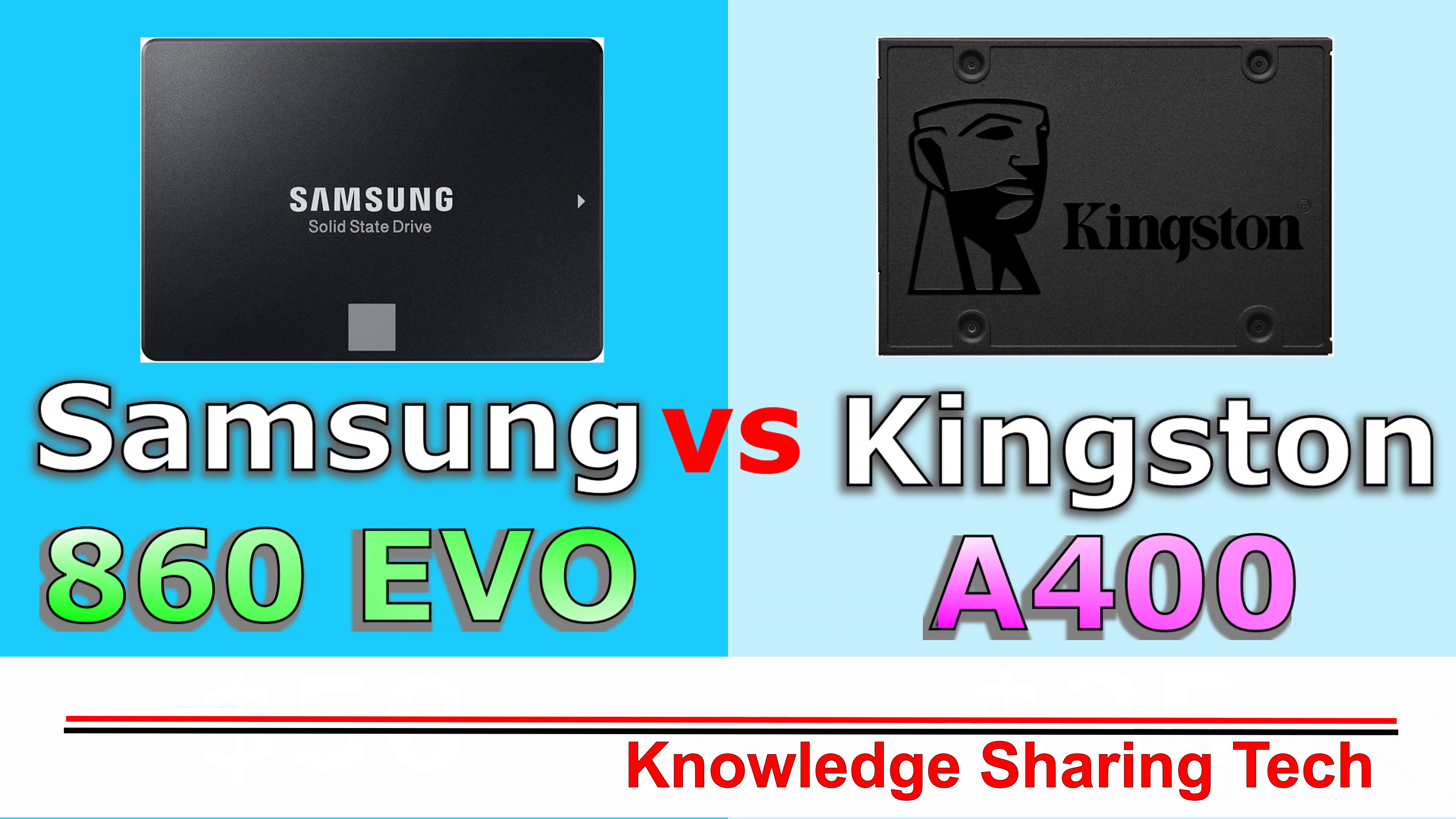 9 MB/s 9 MB/s |
294.6MB/s |
The Samsung 860 Evo is a winner when we talk about both sequential Read and Write operations when 100% empty. However, the differences are not that huge. So, this may not impact your decision a lot. But, still, if you go with the results, the Samsung 860 Evo is going way ahead here again.
Endurance is another one of the important things you will have to be curious about. However, this is an important element only for hardcore users. Let’s compare them here.
| Version (Capacity) | Crucial MX500 (TBW) | Samsung 860 Evo (TBW) |
|---|---|---|
| 250GB | 100 | 150 |
| 500GB | 180 | 300 |
| 1TB | 360 | 600 |
| 2TB | 700 | 1,200 |
| 4TB | Version not available | 2,400 |
Note: TBW (Total Terabytes Written) is a number to determine how much data an SSD can write on its NAND cells during its lifetime. Know more about it here.
Know more about it here.
Before starting, I would like to say, 2,400 TBW is a crazy number. Only a company like Samsung can offer this sort of number to its users. By the way, you might have seen that the Samsung 860 Evo is providing you with a better TBW and hence a better endurance as compared to the MX500.
| Specifications | Crucial MX500 | Samsung 860 Evo |
|---|---|---|
| NAND Type | Micron’s TLC 3D | Samsung’s MLC 3D |
| NAND Layers | 64/96 | 64 |
| Cache Type | DRAM Cache | Low Power DDR4 SDRAM |
| Controller | SMI SM2258 | Samsung Phoenix |
| Controller Configurations | Single-Core, 4-Channels | Penta-Core, 8-Channels |
Looking at these technical specifications, I can say that Samsung 860 Evo has a better back. The controller is powerful and the DRAM cache is faster than the MX500.
The controller is powerful and the DRAM cache is faster than the MX500.
Price is another major thing that may change your final decision. The prices of these products keep changing. So, I would suggest you check the live prices before you make a decision. But, generally, the price of the Samsung 860 Evo is higher than the MX500.
Check Crucial MX500 Price Now!
check samsung 860 evo price Now!
Samsung is surely a big brand in the electronics field. But, crucial is also a big player if we talk especially about the SSD industry. So, in my opinion, choosing any of these SSDs is a good decision.
However, the main thing that may impact your decision is the pricing. Crucial MX500 is a reputed SSD and it is available for a lesser price as compared to the Samsung 860 Evo. So, if you have a limited budget, just choose MX500.
But, if you are good to spend some more money, I would suggest buying the Samsung 860 Evo because of its great random read/write speed and more TBW.
Thanks for reading!
Crucial MX500 Vs. Samsung 860 Evo: 6 Key Differences[Tested]
When searching for options for updating your system’s storage, nothing is better than SSDs.
Solid State Drives, or SSDs, are the most desirable storage options these days. You’ll rarely find anyone who would prefer HDD over SSDs.That is because no one would choose something that offers average output.
If you highly value your gaming output, SSDs are the most trustworthy option. That said, among a plethora of SSDs in the market, the Crucial MX500 offers excellent value to any gaming build.
However, is it worth it over the Samsung 860 Evo?
Both the Crucial MX500 and Samsung 860 Evo are the finest SATA III SSDs and offer quality with performance.
But between them, there has to be a sure winner. To find it out, let’s dive into the article.
Sequential Read and Write Speeds
Sequential read and write speeds are among the core features of any SSD.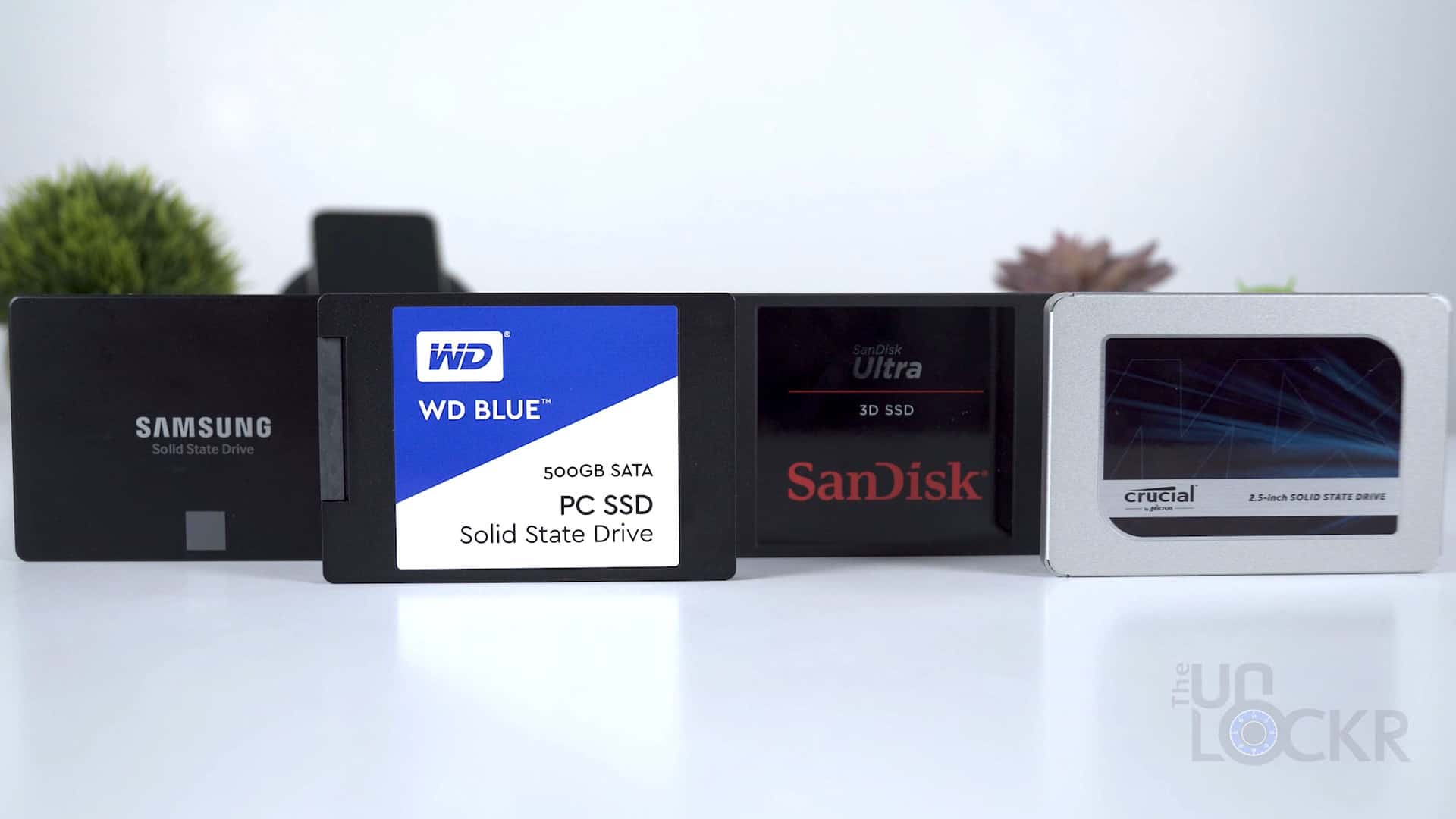 Generally, both the read and write speeds refer to how quickly data is written or read from the drive sequentially.
Generally, both the read and write speeds refer to how quickly data is written or read from the drive sequentially.
In contrast, random read or write speed doesn’t have any sequence. Data is scattered, and the whole process is kind of inconsistent.
The read and write speed matters as it is one of the essential determinants of an SSD’s performance. The optimum speeds for the SATA III SSDs are around 560 MB/s and 510 MB/s, respectively. With their amazing read and write capability, the SSD can reduce high disk usage and smoothen the performance.
As we are talking about Crucial MX500, it has a read speed of 560 MB/s and a write speed of 510 MB/s. In the Samsung 860 Evo, the read speed is 550 MB/s, and the write speed is a tad higher, which is 520 MB/s.
In our tested results, the read speed in both SSDs is quite similar. But in the write speed, Samsung 860 Evo has shown its capabilities.
On the other hand, the random read/write speeds for both these SSDs are pretty close.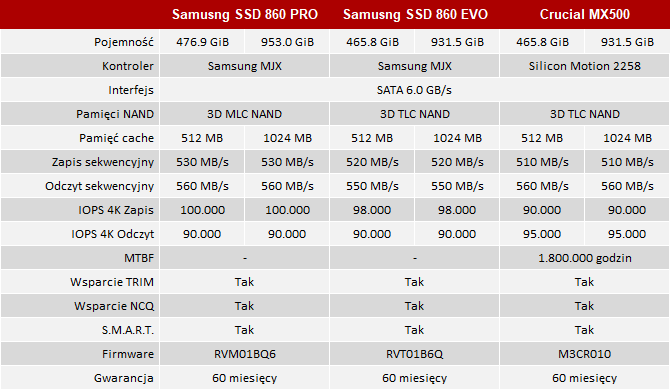 The random read is 95000 IOPS for the model from Crucial, whereas it is 97000 IOPS for Samsung.
The random read is 95000 IOPS for the model from Crucial, whereas it is 97000 IOPS for Samsung.
Similarly, the random write for Crucial is 90000 IOPS, and for Samsung, it is 88000 IOPS.
See how close they are. And due to this, no average gamer would feel the differences between these two models.
But if we need to talk about the winner here, I would pick the Samsung 860 Evo over the Crucial MX500.
Capacity
Anything that you should consider first while buying an SSD is its capacity. You must be wise when choosing an SSD of a particular capacity, as different needs require SSDs of different capacities.
Let’s say you’re a gaming freak and love to store games in your system so that you can play those later. In that case, you need an SSD with a capacity of no less than 500 GB.
The reason is simple. Games usually have a size ranging from 40 to 70 GB, and often they require some extra patches. When you have an SSD with a size of 512 GB or 1 TB, it gets easy to store multiple games and other operating files.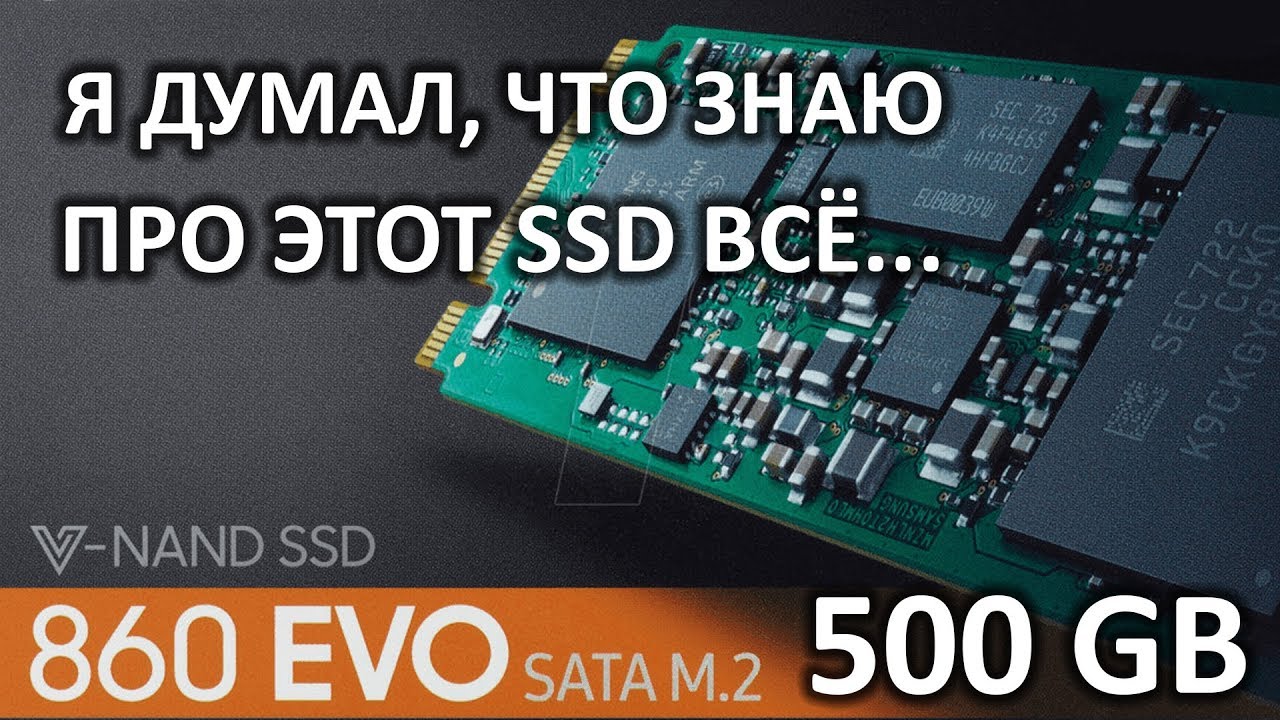
If you are into photo and video editing, you must need an SSD with a large capacity because graphics design applications and files consume a lot of space. You need to have backup files and other project files, which eventually results in enormous space consumption. That is why you need an SSD with at least a size of 1 TB for such functions.
As for both these models, they come with multiple capacities. The Crucial MX500 has options with capacities like 250 GB, 500 GB,1TB, and 2 TB. Quite diverse, isn’t it?
You have multiple options for different functions. You can choose the 250 GB or 500 GB one for casual functions. Or, if you are a video editor, there are 1 TB and 2 TB versions.
However, the Samsung 860 Evo has an edge here as it also comes with a 4 TB version, which you can use in enthusiast-class builds.
In my opinion, 500 GB or 1 TB of both these SSDs are very good for gaming. But if you seek something extreme in an enthusiast-grade build, you better go with the 2 TB or 4 TB version of the Samsung 860 Evo.
So, the Samsung 860 Evo got a slight advantage in the maximum capacity section of its extensive storage options.
Form Factor
When selecting a specific SSD, you must choose a better form factor with your build.
If the SSD doesn’t fit into the chassis, all your money buying it would be a waste. Also, having explicit knowledge of the form factor of your required SSD would give you an idea about how SSDs you can fit.
Now, the Crucial MX500 and the Samsung 860 Evo come with a 2.5 form factor and the M.2 ’gum stick’ type.
However, the Samsung 860 Evo offers another version that comes with an mSATA design. This mSATA SSD is relatively smaller than other standard SSDs, making it a handy option for builds with smaller spaces.
Therefore, the Samsung 860 Evo is more versatile than the Crucial MX500. As under its belt, it has standard SSDs along with mSATA options that work in relatively smaller builds.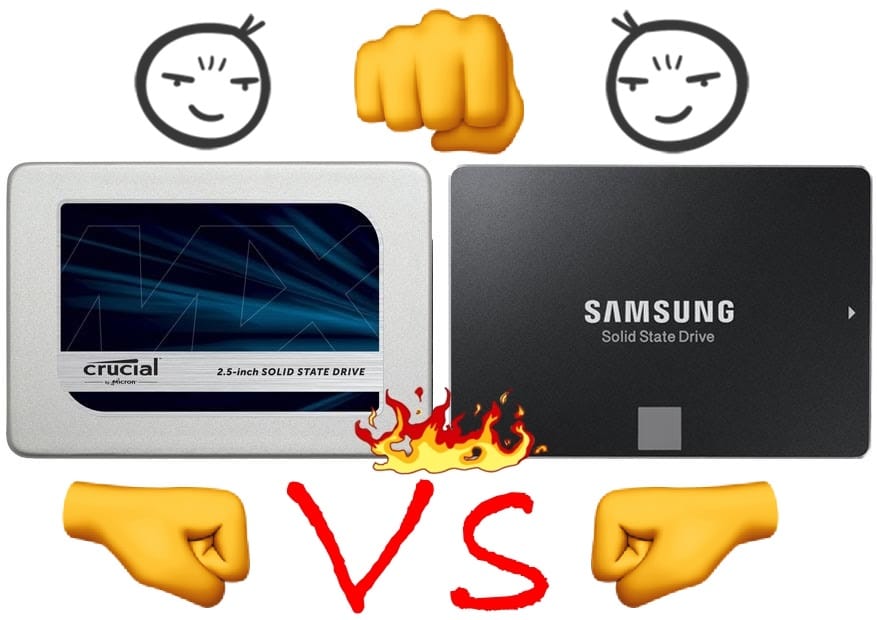
Endurance
For any PC component, long-lastingness is a crucial factor. Most gamers who aim to build a rig that will last long require durable components and a higher warranty.
That said, for SSDs, endurance is more important than its warranty.
Now, the question is, what does SSD endurance mean?
Let me break this down. The total amount of data that an SSD will be able to write under its given warranty is the endurance of that SSD. This endurance is also expressed as TBW.
To be honest, choosing the right SSD isn’t an easy process. It requires many aspects to focus on, and the endurance level of an SSD certainly belongs at the top of the list.
SSDs wear out after a certain period. It happens after the continuous writing of data for an extended period.
You won’t definitely want to buy an option that doesn’t turn out to be feasible. Ultimately, the money matters, and overpaying for something that won’t deliver doesn’t make any sense.
Now, you should keep in mind that the larger the capacity, the higher the endurance. Between these two models, the 860 Evo has the edge over the MX500.
The 860 Evo has an endurance of at least 150 TBW on its 250 GB version. The best part is that its 4 TB version sports a staggering endurance of 2400 TBW.
| Capacity | Crucial MX500 (TBW) | Samsung 860 Evo (TBW) |
|---|---|---|
| 250GB | 100 | 150 |
| 500GB | 180 | 300 |
| 1TB | 360 | 600 |
| 2TB | 700 | 1200 |
| 4TB | — | 2400 |
In contrast, the minimum endurance in MX500 is 100 TBW in the 250 GB model. The max endurance is present on the 2 TB version, which is 700 TBW.
Therefore, despite having similar warranties, Samsung 860 Evo is a clear winner over MX500 for endurance.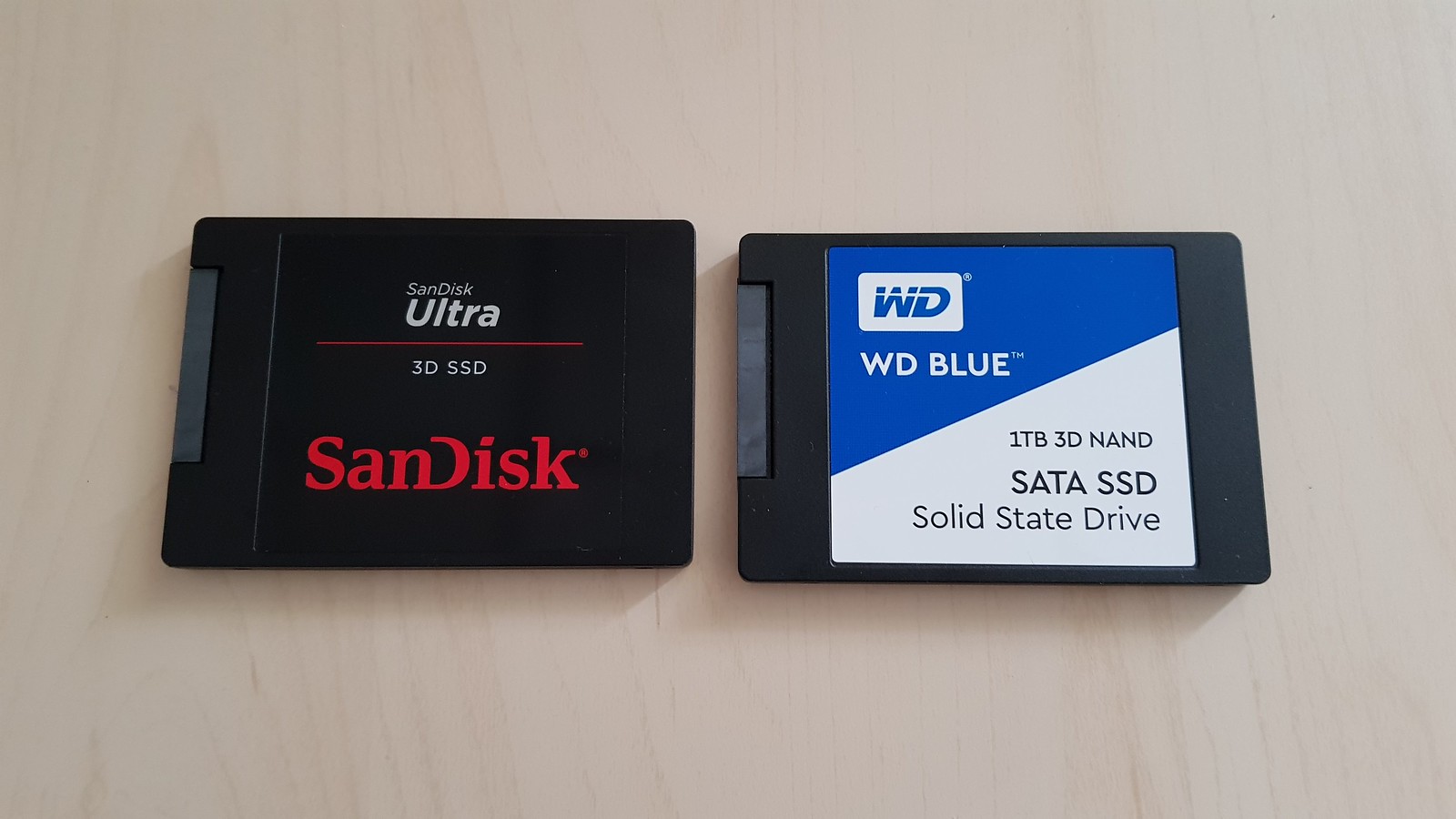
Software
The way you would control the SSD would impact its overall productivity. And that is where the software with which you can control the SSD comes into play.
The software that the manufacturers provide has a significant role in dictating the SSD output.
It consists of an interface that perfectly uses the drive to its potential.
The 860 Evo has Samsung Magician software that comes with a very user-friendly interface. It just eases your job to a great extent.
It consists of a variety of features that helps you to keep proper track of your storage. Also, it enables access to the sequential write/read speeds and monitors the temperature.
Besides, you’ll also like the way it gives you updates about new firmware. In my opinion, the best part about this software is the 256-bit hardware encryption that saves your storage from theft or hacking.
Compared to the 860 Evo, the Crucial MX500 uses the Crucial’s storage executive. This software does every other common function that is available.
This software does every other common function that is available.
You can view the storage stats as well as look for new updates. The best part is that this software includes cache features, which significantly speed up the SSD function.
Pricing
The price becomes a huge factor when you are about to make the final decision. Since both these models come with different versions, prices are different.
However, the Samsung 860 Evo price is around double in every instance.
That is why Crucial has the most affordable SSD to offer, which is its 250 GB version. On the contrary, the 4 TB version of the 860 Evo is the most expensive one.
Which Should You Buy?
Both the Crucial MX500 and the Samsung 860 Evo are popular solid-state drives (SSDs) that offer reliable performance and durability. But when choosing a specific one, you should consider some factors.
The first thing you should check is its read and write speed in the actual test because it’s the main thing that matters. After that, there comes capacity, endurance, and budget.
After that, there comes capacity, endurance, and budget.
Based on every factor and extensive tests, we came to a final result and presented the winners below.
Editors Choice: Samsung 860 Evo
Samsung makes some of the finest SSDs in the market. Through the 860 Evo, Samsung maintains that reputation. This TLC-based SATA III is an upgraded version of the 850 Evo, and it beats every competition to be one of the leading choices of gamers.
And that is because it delivers exactly what it promises and is probably one of the fastest SATA SSDs you can add to your system.
Pros
- »It offers various storage capacities to choose from.
- »Excellent sequential read and write speed.
- »Great endurance capabilities.
- »Reliable manufacturer.
Cons
- »Expensive compared to other SATA SSDs.
The Samsung 860 Evo might be labeled as expensive, but its top-notch features and high endurance make it worth every penny.
See the price of the Samsung 860 Evo →
Alternate Choice: Crucial MX500
The Crucial MX500 might not cope with Samsung in performance, but it provides a very intriguing price which allows it to give head-to-head competition with the 860 Evo.
The price is very affordable, which makes it perfect for low and mid-end budget PCs. It delivers decent performance and is one of the most highly rated on the market.
Pros
- »Very affordable price.
- »It offers 250 GB, 500GB, 1 TB, and 2 TB versions.
Cons
- »Lower sequential read/write speed than 860 Evo.
- »Endurance isn’t top-notch.
Despite being an alternate choice, Crucial MX500 performs well and is hardly distinguishable in games and multitasking without a test. It makes the SSD perfect for a value-for-money choice and budget build.
See the price of the Crucial MX500 →
FAQ
Which is better, the Samsung 860 Evo or MX500?
The 860 Evo is better if you take various aspects into account. It has more versions and greater endurance, which are the prominent factors for choosing an SSD.
It has more versions and greater endurance, which are the prominent factors for choosing an SSD.
Is the Crucial MX500 worth it?
The Crucial MX500 offers good features along with diverse capacities. The best part is that this SSD is priced affordably, which eventually makes it worth every penny.
What are the advantages of an mSATA SSD?
mSATA SSDs aren’t that advantageous when it comes to features or performance. But when it is about effective pricing and smaller builds, these SSDs are viable options.
Crucial MX500 vs Samsung 860 EVO: Focus on 5 aspects
Crucial Mx500 Vs Samsung 860 Evo
Try our troubleshooting tool
Select operating system
Windows 10Windows 8Windows 7Windows VistaWindows XPmacOS Big SurUbuntuDebianFedoraCentOSArch LinuxLinux MintFreeBSDOpenSUSEManjaroSelect a programming language (optional)
-PythonJavaScriptJavaC#C++RubySwiftPHPGoTypeScriptKotlinRustScalaPerl
Describe your problem
Summary :
Crucial MX500 vs Samsung 860 EVO, what’s the difference? Which one is better for you? Will this post showcase some of the differences between Crucial MX500 and Samsung 860 EVO? In addition, MiniTool’s SSD upgrade tool will be shown.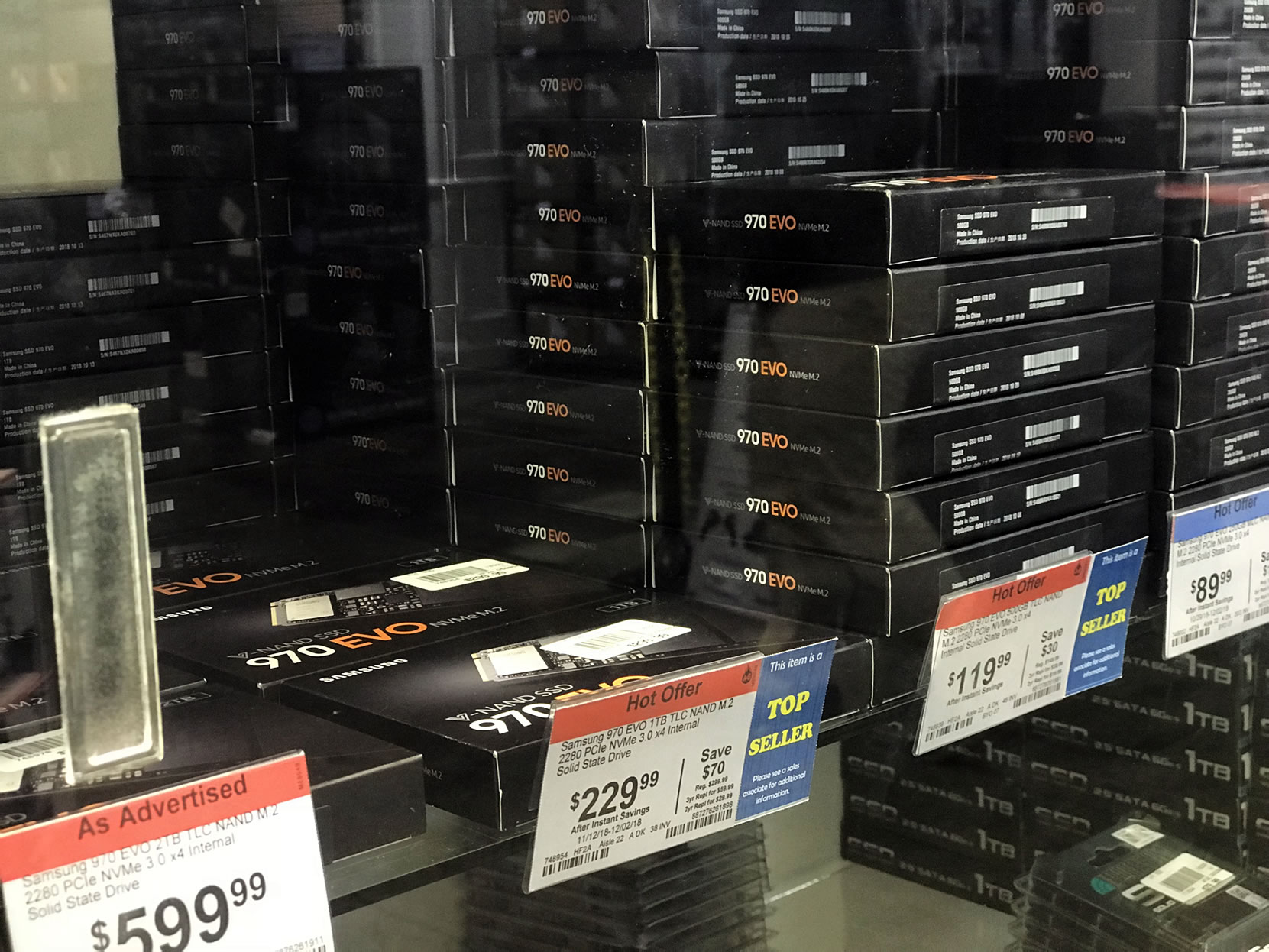
Quick Navigation:
Crucial MX500 and Samsung 860 EVO SSD Review
If you are trying to upgrade or replace the hard drive in your computer to improve performance, almost an SSD is recommended. And now there are various SSDs in the storage market, such as Crucial MX500, Samsung 860 EVO, Samsung 970 EVO and so on.
Samsung 860 EVO VS 970 EVO: what to choose?
Which SSD should you buy for your PC, Samsung 860 EVO or 970 EVO? After reading this post, you will understand the difference between them and what to use.
Read more
With so many different SSDs on the market, the Crucial MX500 and Samsung 860 EVO are the most popular. However, some users are confused and do not know which one to choose. And they wonder how the Crucial MX500 differs from the Samsung 860 EVO. So, in the next section, we will explain what they are and how they differ.
So, in the next section, we will explain what they are and how they differ.
Crucial MX500 SSD
The Crucial MX500 is the first Crucial drive based on Micron’s 64-layer 3D TLC NAND and the second generation of Crucial’s mainstream MX series using TLC NAND instead of MLC NAND. The Crucial MX500 SSD is available in both M.2 and 2.5-inch options, so one or the other type can be installed on almost any modern PC and laptop. The Crucial MX500 SSD delivers quality, speed and security backed by helpful service and support.
The Crucial MX500 SSD is also available in four different capacities: 250GB, 500GB, 1TB and 2TB.
Samsung 860 EVO SSD
The Samsung 860 EVO SSD is also one of the best-selling SSDs in the world and is designed for mainstream PCs and laptops. With the latest V-NAND technology and a robust algorithm based controller, Samsung 860 EVO SSDs come in a wide range of compatible form factors and capacities.
The Samsung 860 EVO SSD comes in 5 capacities: 250 GB, 500 GB, 1000 GB, 2000 GB and 4000 GB. So, many users would like to install Samsung 860 EVO SSD in their computer to get more storage space and improve performance.
So, many users would like to install Samsung 860 EVO SSD in their computer to get more storage space and improve performance.
Knowing some simple information about Crucial MX500 and Samsung 860 EVO SSDs, below we will show you some differences between Crucial MX500 and Samsung 860 EVO.
2 Best cloning software | How to clone without data loss
How do I clone a Crucial SSD hard drive to improve performance? This post shows 2 best Crucial cloning software to clone SSD without data loss.
Read more
Crucial MX500 vs Samsung 860 EVO: focus on 5 aspects
In this part we will show you some of the differences between MX500 and 860 EVO. For more information, keep reading.
1.Crucial MX500 vs Samsung 860 EVO: Form Factor and Interface
First of all, we will look at the form factor of the Crucial MX500 and Samsung 860 EVO SSDs.
The Crucial MX500 SSD is available in M.2 and 2.5″ and the Samsung 860 EVO SSD is available in M. 2, 2.5″ and mSATA. The interface of both the Crucial MX500 and the Samsung 860 EVO SSD is SATA 6.0 GB/s.
2, 2.5″ and mSATA. The interface of both the Crucial MX500 and the Samsung 860 EVO SSD is SATA 6.0 GB/s.
2.5 VS 3.5 HDD: what are the differences and which one is better?
What is the difference between 2.5 HDD and 3.5 HDD? This post shows some of the differences between these two hard drive form factors.
Read more
2. Crucial MX500 vs Samsung 860 EVO: capacity
When choosing an SSD, capacity is an important factor to consider because a larger hard drive can store more files.
Regarding Crucial MX500 vs Samsung 860 EVO, you can refer to the following table.
| Crucial MX500 | Samsung 860 EVO | |
| Capacity 900 04 | 250 GB, 500 GB, 1 TB, 2 TB | 250 GB, 500 GB, 1 TB, 2 TB , 4 TB |
From the table above, you can see that the Samsung 860 EVO SSD provides more choice of hard drive capacity. You can choose any of them according to your needs.
You can choose any of them according to your needs.
3. Crucial MX500 vs Samsung 860 EVO: performance
Hard drive performance will be the most important factor to consider when choosing an SSD. In terms of speed, we will compare the Crucial MX500 1TB and the Samsung 860 EVO 1TB.
| Crucial MX500 1TB | Samsung 860 EVO 1TB | |
| 900 03 Sequential read | 560MB/s | 550MB/s |
| Sequential Write | 510MB/s | 520MB/s 90 091 |
| Random Read | 95,000 IOPS | 97000 IOPS |
| Random Write |
IOPS |
88000 IOPS |
Regarding the same capacity of Crucial MX500 and Samsung 860 EVO SSD, Crucial MX500 1TB sequential read speed is much faster than Samsung 860 EVO 1TB, but we think they are not much different.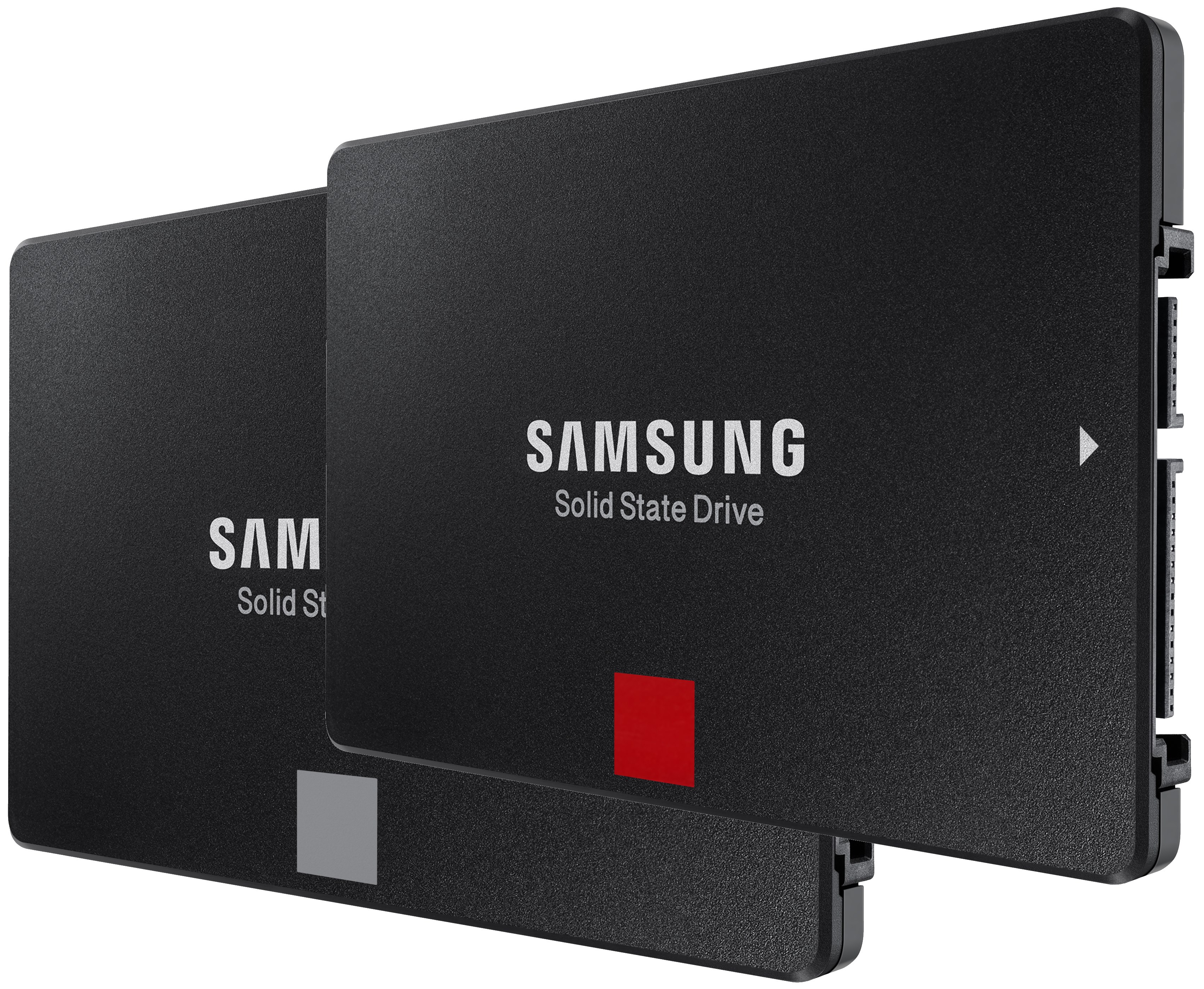 Therefore, if you want to improve your computer’s performance, you can replace your traditional hard drive with these two solid state drives to speed up your computer’s access time.
Therefore, if you want to improve your computer’s performance, you can replace your traditional hard drive with these two solid state drives to speed up your computer’s access time.
Of course, you can test the disk performance yourself through the Disk Test feature of the MiniTool Partition Wizard.
4. Crucial MX500 vs Samsung 860 EVO: Warranty
As for the Crucial MX500 vs Samsung 860 EVO, we will show you the fourth perspective — the warranty. As a result, the Crucial MX500 and Samsung 860 EVO SSDs come with a five-year limited warranty.
5. Crucial MX500 vs Samsung 860 EVO: price
In addition to the characteristics of the SSD, the price will be taken into account when choosing the right SSD.
According to the official site of Crucial and Samsung, the Crucial MX500 SSD 1TB costs about $119.99 and the Samsung 860 EVO SSD 1TB costs about $169.99. Of course, Crucial and Samsung SSD prices are subject to change due to different SSD capacities.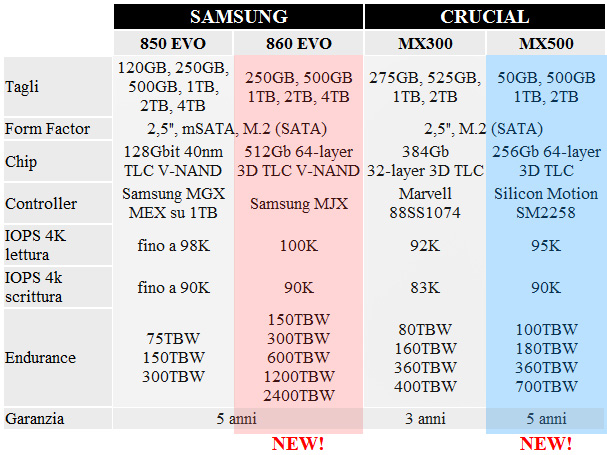 To learn more about the prices of various SSDs, visit their official website.
To learn more about the prices of various SSDs, visit their official website.
In general, regarding the differences between Samsung 860 EVO and Crucial MX500, this post showed 5 aspects. Of course, there are other differences between Crucial and Samsung SSD, such as Endurance, Controller, DRAMA, memory and so on. If you don’t know if the Crucial MX500 SSD or Samsung 860 EVO SSD is right for you, you can take the above factors into account. In addition to the characteristics of the SSD, you also need to check the interface of your computer and select the appropriate SSDs.
Comparison Crucial MX500 [CT250MX500SSD1] vs Samsung 860 EVO [MZ-76E1T0BW] which is better?
Home / SSD / Crucial MX500 [CT250MX500SSD1] vs Samsung 860 EVO [MZ-76E1T0BW]
Crucial MX500 [CT250MX500SSD1]
61%
DeviceList Score
vs
Samsung 860 EVO [MZ-76E1T0BW]
63%
DeviceList Score
We compared the specifications of Crucial MX500 [CT250MX500SSD1] and Samsung 860 EVO [MZ-76E1T0BW] and compiled a list of benefits and a comparison table for you. Find out which one to choose in 2023.
Find out which one to choose in 2023.
Benefits Crucial MX500 [CT250MX500SSD1]
|
Value for money |
|
60
44.1 (277.4%) better than vs 15.9 |
|
$ |
|
49
-90 (-64.7%) better than vs 139 |
|
Maximum sequential read speed |
|
560 MB/s
10 MB/sec (1.8%) better than vs 550 MB/s |
Benefits of Samsung 860 EVO [MZ-76E1T0BW]
Comparison winner
|
Storage capacity |
|
1000 GB
750 GB (300%) better than vs 250 GB |
|
Maximum sequential write speed |
|
520 MB/s
10 MB/sec (2%) better than vs 510 MB/s |
|
Random Read Speed 4 KB Files (QD32) |
|
98000 IOPS
3000 IOPS (3. vs 95000 IOPS |
|
Service life |
|
600TBW
500 TBW (500%) better than vs 100 TBW |
|
Width |
|
69.85 mm
-0.15000000000001 mm (-0.2%) better than vs 70 mm |
|
Thickness |
|
6.8 mm
-0.2 mm (-2.9%) better than vs 7 mm |
Comparison of all characteristics
| General parameters | |
|
Server |
|
|
Value for money |
|
| 60
44.1 (277.4%) better than |
15.9 |
|
$ |
|
| 49
-90 (-64.7%) better than |
139 |
| Key Features | |
|
Storage Capacity |
|
| 250 GB | 1000 GB
750 GB (300%) better than |
|
Physical interface |
|
| SATA III | SATA III |
|
NVMe |
|
| Drive configuration | |
|
Memory chip type |
|
| NAND | NAND |
|
Memory structure |
|
| 3D NAND | 3D NAND |
|
Controller |
|
| Silicon Motion SM2258 | Samsung MJX |
| Performance Ratings | |
|
Maximum Sequential Write Speed |
|
| 510 MB/s | 520 MB/s
10 MB/sec (2%) better than |
|
Maximum sequential read speed |
|
| 560 MB/s
10 MB/sec (1. |
550 MB/s |
|
Random write speed 4 KB files (QD32) |
|
IOPS |
IOPS |
|
Random Read Speed 4 KB Files (QD32) |
|
| 95000 IOPS | 98000 IOPS
3000 IOPS (3.2%) better than |
| Reliability | |
|
Service life |
|
| 100 TBW | 600TBW
500 TBW (500%) better than |
|
MTBF (Mean Time Between Failures) |
|
| 1.8 million hours | n/a |
| Additional information | ||
|
TRIM command support | ||
|
Data encryption |
||
| Dimensions | |
|
Width |
|
| 70 mm | 69.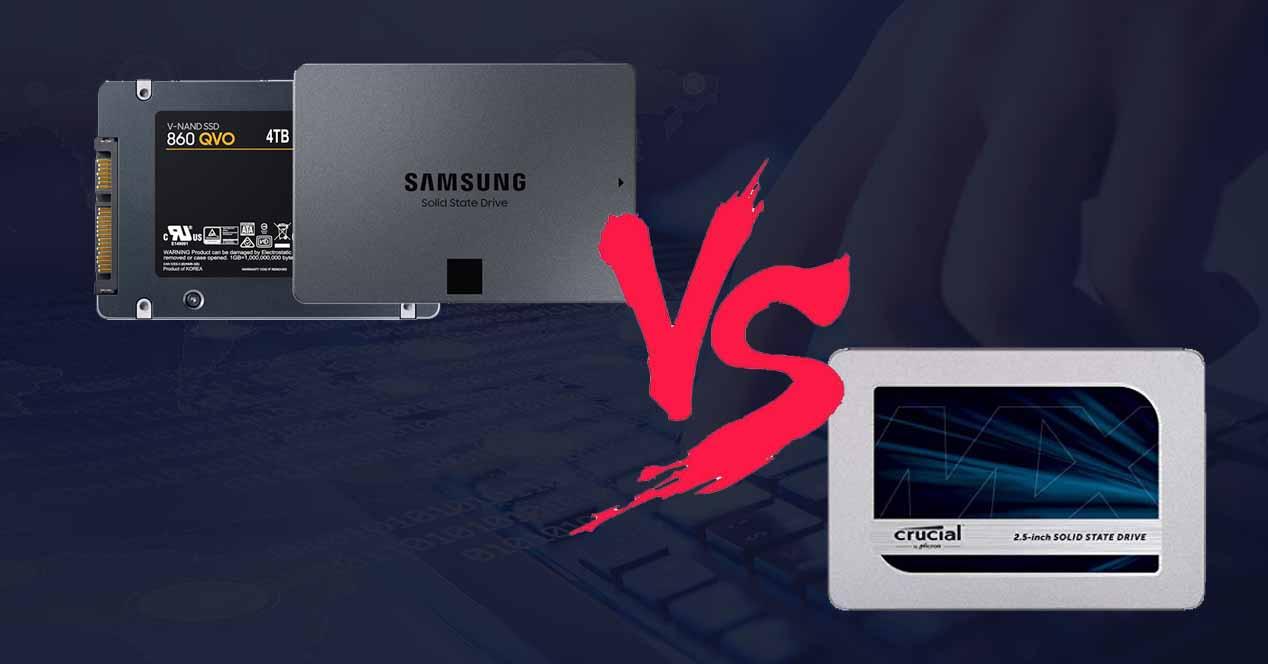 85 mm 85 mm
-0.15000000000001 mm (-0.2%) better than |
|
Length |
|
| 100 mm | 100 mm |
|
Thickness |
|
| 7 mm | 6.8 mm
-0.2 mm (-2.9%) better than |
Reviews
Crucial MX500 [CT250MX500SSD1]
05.01.2023
Voor Metal case, good performance, warranty of 60 months.
Disadvantages
no
Comment
I took constant stutters on the HDD for games, in Valhalla and Horizon Zero Dawn, checked in Valhalla with this SSD almost no stutters, it became much more comfortable to play. Save loading has been reduced from 68s to 22s. In Horizon Zero Dawn, instead of 3.5 minutes, it loads in half a minute! Cyberpunk 2077 also requires an SSD in the system requirements.
I chose according to the reviews, this drive is approximately on a par with the Samsung 860 EVO.
I have an AM3+ system, so there are no other options.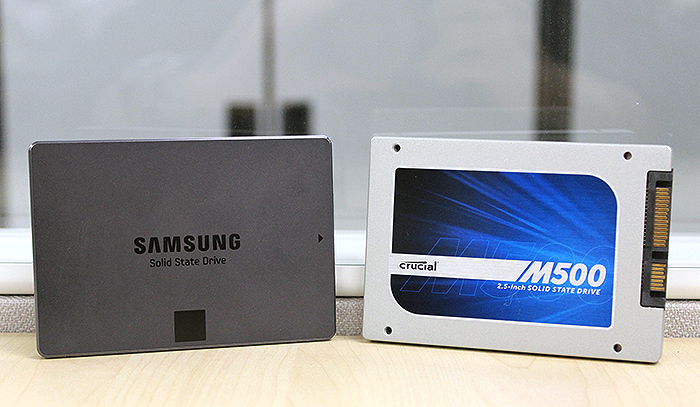 I did not want to take the budget controller.
I did not want to take the budget controller.
21.12.2022
Advantages
comes with two cables for connection: one is normal straight, and the second has a plug bent at 90 degrees for convenience
Disadvantages
none.
Comments
Probably the best option for this price. I picked up at that time the last copy on November 22nd. The read and write speeds are among the highest.
12/16/2022
Advantages
Price, speed, temperatures, etc.
Disadvantages
no
Comment l, at least I have cold there too
12/15/2022
Advantages
Crucial drives are quite reliable, well, at least the MX series that I took, are not voracious and cold enough, even for laptops!
Disadvantages
One «disk» of the MX100 series, which worked for ~6 years as a system one, once a month..two..three stably «fell off», i.e. disappeared from the system!
Comments
Over the many years of their operation, starting from the M500, bought 8 years ago, not one has fallen off yet! And over the past year, I bought 4 of them and 250G and 500G versions and «thrown» different people on beeches and systems! But for that M500, which “chimed” faithfully for almost 8 years, the monitoring program still shows 92% of health, that is, it will last another 5-7 years! Oh, what a longevity!
Samsung 860 EVO [MZ-76E1T0BW]
12/13/2022
Advantages
Took for games.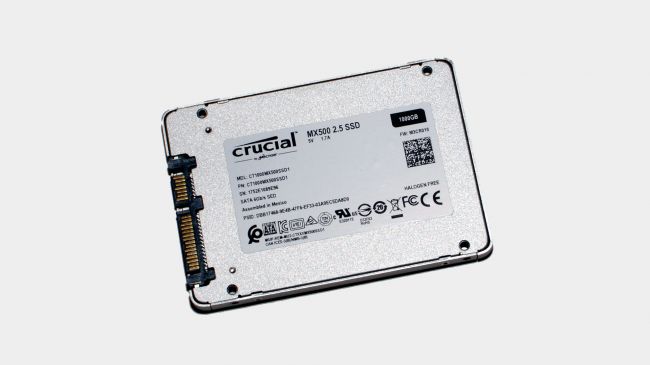

 2%) better than
2%) better than  8%) better than
8%) better than